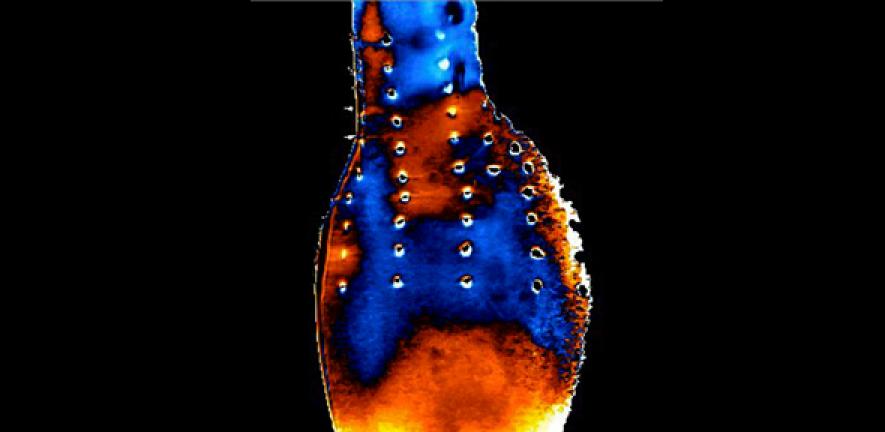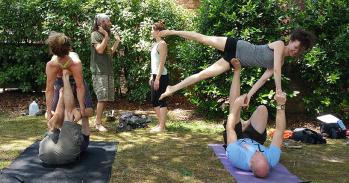
The use of keyhole surgery to repair ruptured abdominal aortic aneurysm is both clinically and cost effective and should be adopted more widely, concludes a randomised trial published by The BMJ today.
The use of keyhole surgery to repair ruptured abdominal aortic aneurysm is both clinically and cost effective and should be adopted more widely, concludes a randomised trial published by The BMJ today.
More than 1000 people a year in the UK require emergency surgery to repair a ruptured abdominal aortic aneurysm. Without repair, ruptured aneurysm is nearly always fatal
Michael Sweeting
This is the first randomised trial comparing the use of keyhole (endovascular) aneurysm repair versus traditional open surgery to repair ruptured aneurysm, with full midterm follow-up.
Abdominal aortic aneurysm is a swelling of the aorta – the main blood vessel that leads away from the heart, down through the abdomen to the rest of the body. If the artery wall ruptures, the risk of death is high, and emergency surgery is needed.
Three recent European randomised trials showed that keyhole repair does not reduce the high death rate up to three months after surgery compared with open repair. However, mid-term outcomes (three months to three years) of keyhole repair are still uncertain.
An international research team set out to assess three year clinical outcomes and cost effectiveness of a strategy of keyhole repair (whenever the shape of the aorta allows this) versus open repair for patients with suspected ruptured abdominal aortic aneurysm who were part of the IMPROVE trial.
Dr Michael Sweeting from the Department of Public Health and Primary Care at the University of Cambridge, who was involved in the trial, says: “More than 1000 people a year in the UK require emergency surgery to repair a ruptured abdominal aortic aneurysm. Without repair, ruptured aneurysm is nearly always fatal. However, surgery is not without its own significant risks, so we are always looking at ways of reducing the risk to the patient. One option is keyhole surgery, but until now not enough was known about how its outcomes compare to regular, open surgery beyond one year after repair.”
The trial involved 613 patients from 30 vascular centres (29 in the UK – including at Addenbrooke’s Hospital, Cambridge - and one in Canada) with a clinical diagnosis of ruptured aneurysm, of whom 316 were randomised to a strategy of keyhole repair and 297 to open repair.
Deaths were monitored for an average of 4.9 years and were similar in both groups three months after surgery. At three years, there were fewer deaths in the keyhole group than in the open repair group, leading to lower mortality (48% vs 56%). However, after seven years there was no clear difference between the groups.
The need for repeat surgery (‘reinterventions’) related to the aneurysm occurred at a similar rate in both groups, with about 28% of each group needing at least one reintervention after three years.
Average quality of life was higher in the keyhole group in the first year, but by three years was similar across the groups. This early higher average quality of life, coupled with the lower mortality at three years, led to a gain in average quality adjusted life years or QALYs (a measure of healthy years lived) at three years in the keyhole versus the open repair group.
The keyhole group also spent fewer days in hospital (14.4 versus 20.5 in the open repair group) and had lower overall costs (£16,900 versus £19,500 in the open repair group).
The researchers point to some study limitations, such as sample size and midterm data focusing on aneurysm-related events, which may have led to some bias. Nevertheless, they say compared with open repair, there are clear benefits associated with keyhole surgery.
“These findings show that, in the first three years after repair, keyhole surgery can improve outcomes and quality of life for patients compared to open surgery, and is more cost effective and requires less time in hospital – important factors to consider for our stretched health services,” adds Dr Sweeting.
Reference
Comparative clinical effectiveness and cost effectiveness of endovascular strategy v open repair for ruptured abdominal aortic aneurysm: three year results of the IMPROVE randomised trial. BMJ; 15 Nov 2017; DOI:
Adapted from a press release from The BMJ.

The text in this work is licensed under a Creative Commons Attribution 4.0 International License. For image use please see separate credits above.




